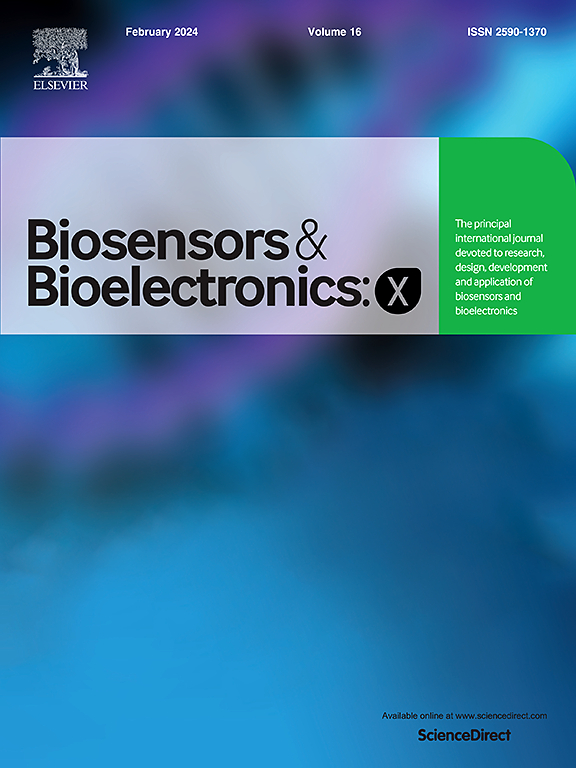细胞角蛋白片段21-1作为肺癌肿瘤标志物的深入评价及不同检测方法的比较
IF 10.61
Q3 Biochemistry, Genetics and Molecular Biology
引用次数: 0
摘要
研究表明,细胞角蛋白19 (CK19)的CYFRA 21-1片段有望成为非小细胞肺癌(NSCLC)的生物标志物。虽然以前的文献鉴定了特异性CYFRA 21-1抗体结合表位,但目前检测到的CK19片段的确切分子量并没有很好的文献记载。采用58例肺癌患者(N = 36)和对照组(N = 22)的血清样本,通过酶联免疫吸附法(ELISA)、化学发光法(ChLIA)、电化学发光免疫法(ECLIA)和补偿干涉读取器(CIR)四种不同的定量分析方法测定CYFRA 21-1。在癌症组,ECLIA与ELISA的相关性较高(R(Pearson) = 0.948, R(Spearman) = 0.868), ECLIA与ChLIA、ECLIA与CIR的相关性较低(R= 0.005, R= - 0.0593)、(R= 0.0275, R= 0.167)。对照组ECLIA与ELISA的相关性较高(R = 0.948, R = 0.868), ECLIA与ChLIA的相关性较低(R = 0.005, R = - 0.0593), ECLIA与CIR的相关性较低(R = 0.0275, R = 0.167)。与ECLIA相比,一致性系数(pc)较差(pc <;0.90),除了ELISA中癌症组(pc = 0.913)。ECLIA是唯一报告控制范围高于1 ng/mL CYFRA 21-1的检测方法(ECLIA, 1.14-21.59 ng/mL;ELISA, 0.79 ~ 24.26 ng/mL;ChLIA, 0.062 ~ 0.691 ng/mL;0.08 - -7.68 ng / mL)。每次测定所测量的蛋白质的不同大小可能在观察到的差异中起作用。鉴于各种检测方法中CYFRA 21-1的浓度估计不同,进一步表征该片段及其在上皮恶性肿瘤(如非小细胞肺癌)期间的释放,对于开发有效的生物标志物检测方法至关重要。本文章由计算机程序翻译,如有差异,请以英文原文为准。
A deeper evaluation of cytokeratin fragment 21-1 as a lung cancer tumor marker and comparison of different assays
Studies show CYFRA 21-1 fragments of cytokeratin 19 (CK19) to be promising biomarkers for non-small cell lung cancer (NSCLC). Although previous literature identifies specific CYFRA 21-1 antibody binding epitopes, the exact molecular weight of the CK19 fragment being detected by current assays is not well-documented. Serum samples from 58 patients (lung cancer (N = 36), control (N = 22)) were used to measure CYFRA 21-1 across four different quantification assays: enzyme-linked immunosorbent assay (ELISA), chemiluminescent assay (ChLIA), electrochemiluminescence immunoassay (ECLIA), and compensated interferometric reader (CIR). In the cancer group, correlation between ECLIA and ELISA was high (R(Pearson) = 0.948, r(Spearman) = 0.868) while correlation between ECLIA vs ChLIA and ECLIA vs CIR was low (R= 0.005, r = −0.0593), (R = 0.0275, r = 0.167), respectively. In the control group, correlation between ECLIA and ELISA was high (R = 0.948, r = 0.868) while correlation between ECLIA vs ChLIA and ECLIA vs CIR was low (R = 0.005, r = −0.0593), (R = 0.0275, r = 0.167), respectively. Compared to ECLIA, concordance coefficients (pc) were poor (pc < 0.90) across all assays except for cancers group in ELISA (pc = 0.913). ECLIA was the only assay to report control ranges above 1 ng/mL CYFRA 21-1 (ECLIA, 1.14–21.59 ng/mL; ELISA, 0.79–24.26 ng/mL; ChLIA, 0.062–0.691 ng/mL; 0.08–7.68 ng/mL). Differing sizes of the protein being measured by each assay may have a role in the discrepancies observed. Given the different CYFRA 21-1 concentration estimates among assays, further characterization of the fragment and its release during epithelial malignancies, such as NSCLC, is imperative to developing effective biomarker assays.
求助全文
通过发布文献求助,成功后即可免费获取论文全文。
去求助
来源期刊

Biosensors and Bioelectronics: X
Biochemistry, Genetics and Molecular Biology-Biophysics
CiteScore
4.60
自引率
0.00%
发文量
166
审稿时长
54 days
期刊介绍:
Biosensors and Bioelectronics: X, an open-access companion journal of Biosensors and Bioelectronics, boasts a 2020 Impact Factor of 10.61 (Journal Citation Reports, Clarivate Analytics 2021). Offering authors the opportunity to share their innovative work freely and globally, Biosensors and Bioelectronics: X aims to be a timely and permanent source of information. The journal publishes original research papers, review articles, communications, editorial highlights, perspectives, opinions, and commentaries at the intersection of technological advancements and high-impact applications. Manuscripts submitted to Biosensors and Bioelectronics: X are assessed based on originality and innovation in technology development or applications, aligning with the journal's goal to cater to a broad audience interested in this dynamic field.
 求助内容:
求助内容: 应助结果提醒方式:
应助结果提醒方式:


